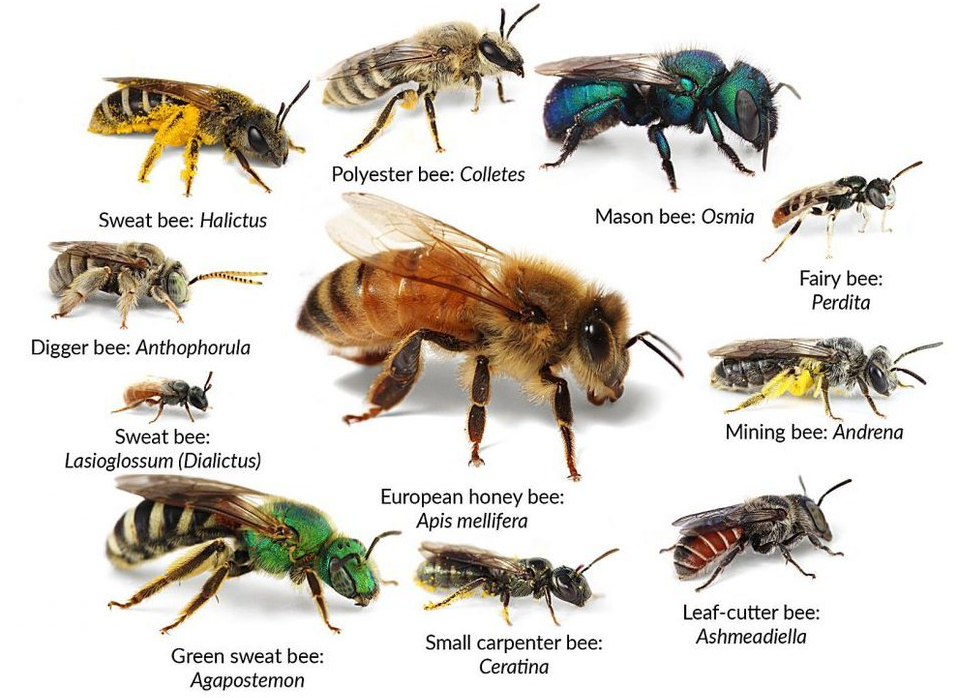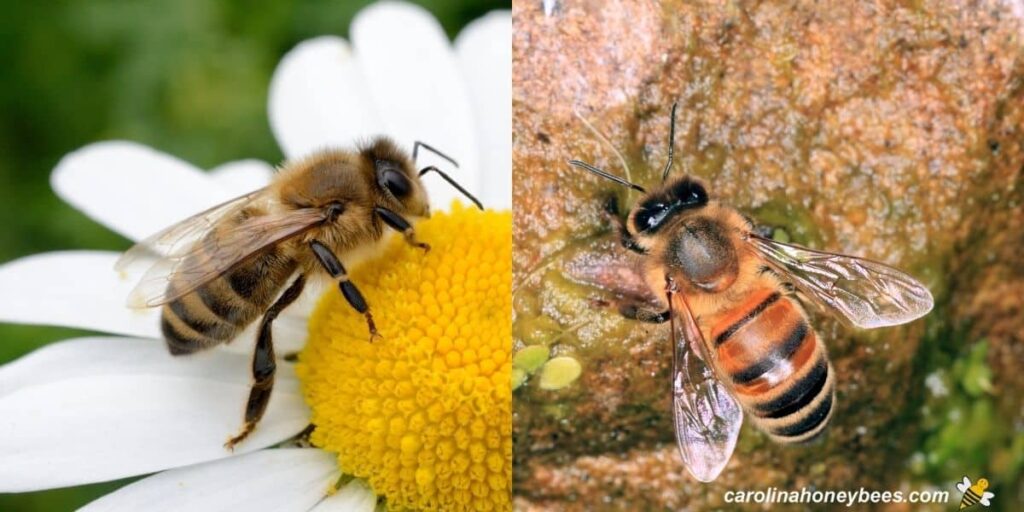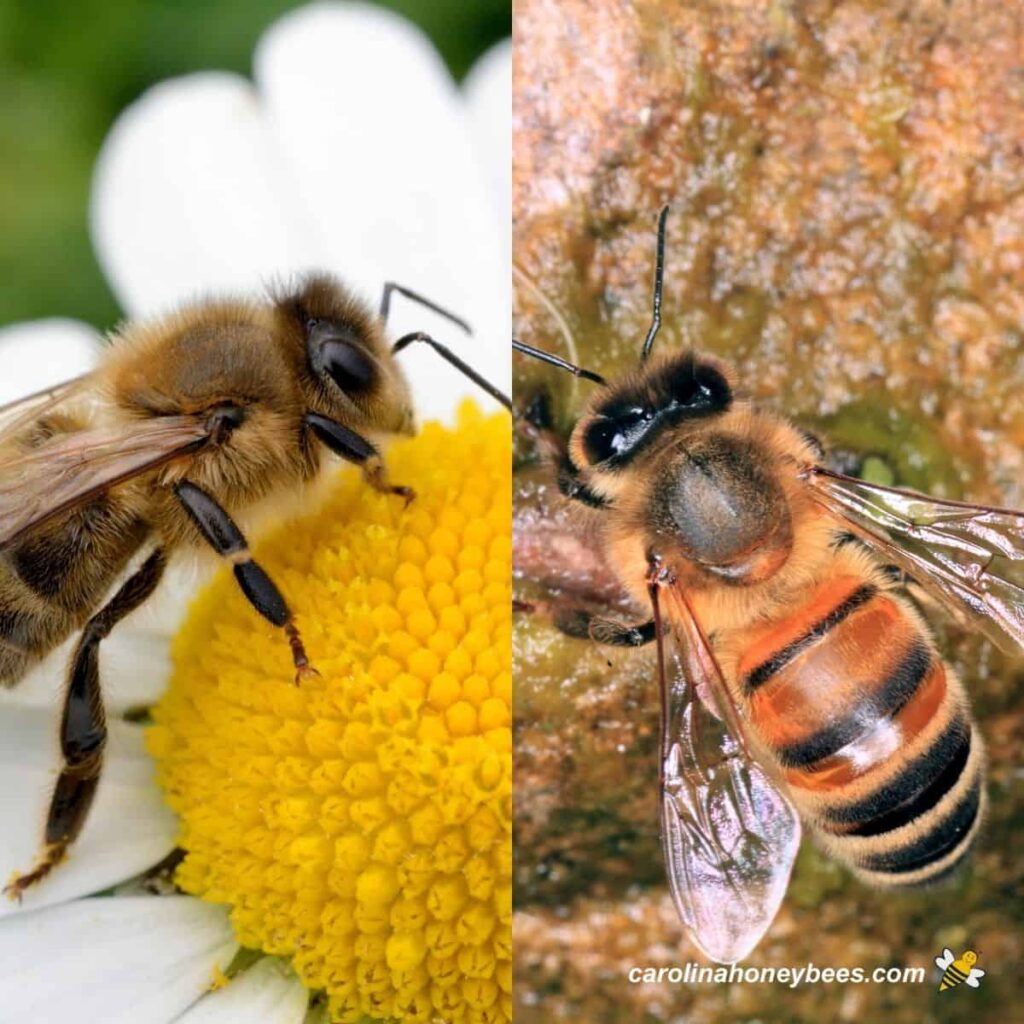
Ready to discover your perfect bee companion? In this fascinating article, we’ll explore the diverse world of bee species and help you find the one that suits your preferences. From the dazzling colors of the Blue Carpenter Bee to the agile flight of the Bumblebee, each species brings its unique charm and characteristics. Get ready to be amazed by the incredible diversity of these buzzing creatures and find out which bee is the perfect match for you.

1. Honeybees
Honeybees are perhaps the most well-known and beloved type of bee. They are known for their impressive honey production and important role in pollination. There are several different species of honeybees, but the two most commonly encountered are Apis mellifera and Apis cerana.
1.1 Apis mellifera
Apis mellifera, commonly known as the Western honeybee, is the species most widely recognized as the honeybee. They are highly sociable, living in large colonies and constructing intricate hive structures. These bees are excellent pollinators and are regarded as crucial for the success of many crops. Due to their honey production capabilities, they are also extensively kept in managed hives by beekeepers worldwide.
1.2 Apis cerana
Apis cerana, also known as the Eastern honeybee, is another popular species of honeybee. Native to Asia, these bees are well-adapted to a variety of climates and habitats. They also exhibit valuable pollination and honey production qualities. Although they are not as common outside of their native range, Apis cerana has recently gained attention for its potential contributions to sustainable beekeeping practices.
1.3 Apis dorsata
Apis dorsata, commonly referred to as the Giant honeybee, is the largest species of honeybee. These bees are mainly found in parts of Asia and are known for their impressive honeycombs suspended high in trees. They are highly aggressive when their nests are disturbed, making them more challenging to manage compared to other honeybee species. However, due to their ability to forage over large distances, Apis dorsata plays a crucial role in pollination.
2. Bumblebees
Bumblebees are large, furry bees that are well-known for their distinctive buzzing sound as they fly from flower to flower. They are valuable pollinators and are particularly effective at pollinating certain types of plants, including tomatoes, blueberries, and squash. Some common species of bumblebees include Bombus terrestris, Bombus impatiens, and Bombus vosnesenskii.
2.1 Bombus terrestris
Bombus terrestris, also known as the Buff-tailed bumblebee, is native to Europe but has been introduced to other parts of the world, including North America. These bees are known for their long tongues, which enable them to access nectar from flowers with deep corollas. Their large colony sizes and effective pollination abilities make them ideal for certain farming practices.
2.2 Bombus impatiens
Bombus impatiens, commonly referred to as the Common Eastern bumblebee, is native to North America. These bees are adaptable and can thrive in both natural habitats and agricultural landscapes. With their fuzzy bodies and gentle demeanor, Bombus impatiens is a favored subject for scientific studies and has contributed valuable insights into bumblebee behavior and colony dynamics.
2.3 Bombus vosnesenskii
Bombus vosnesenskii, also known as the Yellow-faced bumblebee, is native to the western part of North America. They are distinctive for their bright yellow facial markings. These bees are excellent pollinators and are known to be particularly effective at pollinating certain types of plants, such as wildflowers. Due to their affinity for native habitats, Bombus vosnesenskii is considered an important species for ecosystem preservation.
3. Carpenter Bees
Carpenter bees are a group of bees that are known for their ability to excavate wood for nesting purposes. They are solitary bees, meaning that they do not live in large colonies like honeybees or bumblebees. Some common species of carpenter bees include Xylocopa violacea, Xylocopa caerulea, and Xylocopa varipuncta.
3.1 Xylocopa violacea
Xylocopa violacea, commonly known as the Violet carpenter bee, is a large and impressive species found in parts of Europe. They are known for their vibrant purple coloration and can be seen buzzing around flowers in search of nectar. The female carpenter bees excavate nest tunnels in dead wood, making them somewhat of a nuisance to wooden structures, but also important for wood decomposition.
3.2 Xylocopa caerulea
Xylocopa caerulea, also known as the Blue carpenter bee, is native to parts of Asia. These bees are known for their striking metallic blue coloration and are often admired for their beauty. Like other carpenter bees, they have the ability to create tunnels in wood, which can sometimes impact wooden structures. However, Xylocopa caerulea is generally considered a beneficial pollinator and a fascinating insect to observe.
3.3 Xylocopa varipuncta
Xylocopa varipuncta, commonly referred to as the Valley carpenter bee, is native to the southwestern United States and Mexico. They are relatively large bees with a dark black coloration and can often be found buzzing around desert flowers. Despite their ability to nest in wood, they prefer softer materials like dead agave stalks, which are more readily available in their natural habitats.
4. Mason Bees
Mason bees are a fascinating group of solitary bees that are known for their exceptional pollination abilities. They are called “mason” bees due to their habit of constructing nest cells using mud or similar materials. Some common species of mason bees include Osmia lignaria, Osmia cornifrons, and Osmia rufa.
4.1 Osmia lignaria
Osmia lignaria, also known as the Blue orchard bee, is native to North America and is highly valued as a pollinator for fruit trees, particularly apple and cherry trees. These bees are efficient pollinators due to their hairy bodies and efficient foraging behavior. They are often kept in managed nesting blocks to enhance pollination in orchards and gardens.
4.2 Osmia cornifrons
Osmia cornifrons, commonly referred to as the Horn-faced bee, is native to Japan but has been introduced to other parts of the world, including North America. These bees are known for their unique horn-like projections on the female’s face. Osmia cornifrons is an effective pollinator and is commonly used in commercial agriculture to enhance fruit and berry pollination.
4.3 Osmia rufa
Osmia rufa, also known as the Red mason bee, is native to Europe and parts of North Africa and Asia. These bees are exceptional pollinators of various plants, including fruit trees, berries, and wildflowers. Osmia rufa is often found nesting in pre-existing cavities, such as hollow stems or beetle holes, making them easily adaptable to urban and natural environments.

5. Mining Bees
Mining bees, also known as digger bees, are solitary bees that construct their nests by digging tunnels in the ground. They are excellent pollinators and play an essential role in various ecosystems. Some common species of mining bees include Andrena bicolor, Andrena carolina, and Andrena minutula.
5.1 Andrena bicolor
Andrena bicolor, commonly known as the Gwynne’s mining bee, is native to North America and is appreciated for its important ecological contributions. These bees are effective pollinators of many wildflowers and contribute to the overall health and biodiversity of their habitats. Andrena bicolor is known for its striking coloration, with males displaying vibrant facial patterns.
5.2 Andrena carolina
Andrena carolina, also referred to as the Carolina mining bee, is native to North America. These bees are often found nesting in sandy or loamy soils and are known for their efficient foraging behavior. Andrena carolina plays a crucial role in the pollination of a wide range of wildflowers and contributes to the overall richness of plant communities.
5.3 Andrena minutula
Andrena minutula, commonly known as the Small-miner bee, is distributed across Europe and parts of Asia. These bees are typically found nesting in sandy or loamy soils and exhibit important pollination interactions with various plant species. Andrena minutula is a fascinating species to observe, with males displaying distinct color patterns that help them attract females.
6. Leafcutter Bees
Leafcutter bees are a group of solitary bees that are named after their habit of cutting circular pieces out of leaves to construct their nest cells. They are highly efficient pollinators and are known for their unique nesting behaviors. Some common species of leafcutter bees include Megachile rotundata, Megachile campanulae, and Megachile sculpturalis.
6.1 Megachile rotundata
Megachile rotundata, also known as the Alfalfa leafcutter bee, is native to Europe but has been widely introduced to other parts of the world, including North America. These bees are highly efficient pollinators of alfalfa and other crops and are even commercially managed in some agricultural systems. Megachile rotundata is compact in size and has distinctive markings on its abdomen.
6.2 Megachile campanulae
Megachile campanulae, commonly referred to as the Bellflower leafcutter bee or Campanula carpenter bee, is native to Europe and Asia. These bees are specialized pollinators of bellflowers and other plants in the Campanula family. Megachile campanulae is known for its efficient leaf-cutting ability and meticulous nest-building behavior.
6.3 Megachile sculpturalis
Megachile sculpturalis, also known as the Giant resin bee, is native to Asia but has become established in parts of Europe and North America. These bees are named after their habit of utilizing tree resins and mud to build their nests. Megachile sculpturalis is a large and impressive species, and while it is not native to some regions, it has adapted well to urban environments.

7. Sweat Bees
Sweat bees belong to the Halictidae family and are named after their affinity for human sweat. They are diverse in size, coloration, and nesting habits. Some common species of sweat bees include Halictus rubicundus, various species within the Lasioglossum genus, and Augochlora spp.
7.1 Halictus rubicundus
Halictus rubicundus, commonly known as the Red sweat bee, is widely distributed across North America. These bees are attracted to the salt and moisture present in human perspiration, leading them to land on human skin occasionally. While their stings can be mildly painful, Halictus rubicundus is generally considered non-aggressive and an important pollinator of wildflowers.
7.2 Lasioglossum spp.
The Lasioglossum genus comprises a diverse group of sweat bees found in various regions worldwide. These bees vary in size, coloration, and nesting habits, but they all share a mutual preference for feeding on nectar and pollen. Lasioglossum species are efficient pollinators and contribute to the overall diversity of bee species in their respective ecosystems.
7.3 Augochlora spp.
Augochlora spp., commonly referred to as Green sweat bees, are found primarily in the Americas. These bees are known for their vibrant metallic green coloration and their preference for floral resources. Augochlora species are important pollinators, particularly in fields and meadows, where they contribute to the pollination of a wide range of flowering plants.
8. Wool Carder Bees
Wool carder bees, belonging to the Anthidium genus, are named after their behavior of collecting and carding plant fibers to construct their nests. They are solitary bees known for their territorial nature. The most prominent species is Anthidium manicatum.
8.1 Anthidium manicatum
Anthidium manicatum, commonly known as the European wool carder bee, is native to Europe but has expanded its range to other parts of the world, including North America. These bees are named for their habit of collecting plant fibers, such as wool or hairs, for nest construction. Anthidium manicatum is known for its aggressive behavior in defending its territory, making it an interesting species to observe.

9. Mason Wasps
Mason wasps, also called potter wasps or mason bees, are solitary wasps known for their ability to build mud or clay nests. They share some nesting behaviors with mason bees but belong to the wider wasp family. Some common species of mason wasps include Euodynerus spp., Pachodynerus spp., and Isodontia spp.
9.1 Euodynerus spp.
Euodynerus spp. is a diverse genus of mason wasps found in various regions worldwide. These wasps are known for their mud-nesting behaviors, often building small, spherical nests in sheltered locations. Euodynerus species are important pollinators and contribute to maintaining healthy ecosystems.
9.2 Pachodynerus spp.
Pachodynerus spp. comprises a group of mason wasps found primarily in the Americas. These wasps are known for their distinctive red or orange coloration and their mud-nesting habits. Pachodynerus species are important for pollination and can often be observed visiting flowers in search of nectar and pollen.
9.3 Isodontia spp.
Isodontia spp., commonly referred to as Grass-carrying wasps or grass-carrying hornets, are a group of mason wasps found in various parts of the world. These wasps are known for their unique nesting behaviors, as they use grass stems to construct their nests instead of mud or clay. Isodontia species are valuable pollinators and are highly efficient in capturing and paralyzing insect prey to feed their developing larvae.
10. Solitary Bees
Solitary bees, as the name suggests, are bees that live a solitary lifestyle rather than forming large colonies. They play a crucial role in pollination and contribute to the overall biodiversity of bee species. Some common species of solitary bees include Osima avosetta, various species within the Halictus genus, and various species within the Osmia genus.
10.1 Osima avosetta
Osima avosetta, also known as the Red-striped bee, is native to parts of Europe and Asia. These bees are solitary and prefer nesting in sandy soils or coastal areas. Osima avosetta is known for its striking red coloration and its efficient foraging behavior. This species is considered an important pollinator of wildflowers and contributes to the ecological balance in its native habitats.
10.2 Halictus spp.
The Halictus genus comprises a diverse group of solitary bees found in various regions worldwide. These bees vary in size, coloration, and nesting habits, but they all share a mutual preference for feeding on nectar and pollen. Halictus species are essential pollinators and contribute to the overall diversity of bee species in their respective ecosystems.
10.3 Osmia spp.
The Osmia genus includes a wide variety of solitary bees distributed across different regions. These bees are known for their excellent pollination capabilities, making them valuable contributors to natural ecosystems and agricultural systems. Osmia spp. vary in size, coloration, and nesting habits, but they all exhibit fascinating behaviors and efficient pollination techniques.
In conclusion, there are numerous species of bees, each with its own unique characteristics and contributions to the ecosystem. Whether you are interested in honey production, pollination, or just the sheer beauty of these remarkable insects, there is undoubtedly a bee species perfectly suited for you. Take the time to appreciate and protect these incredible creatures, for without bees, our world would be significantly less vibrant.
